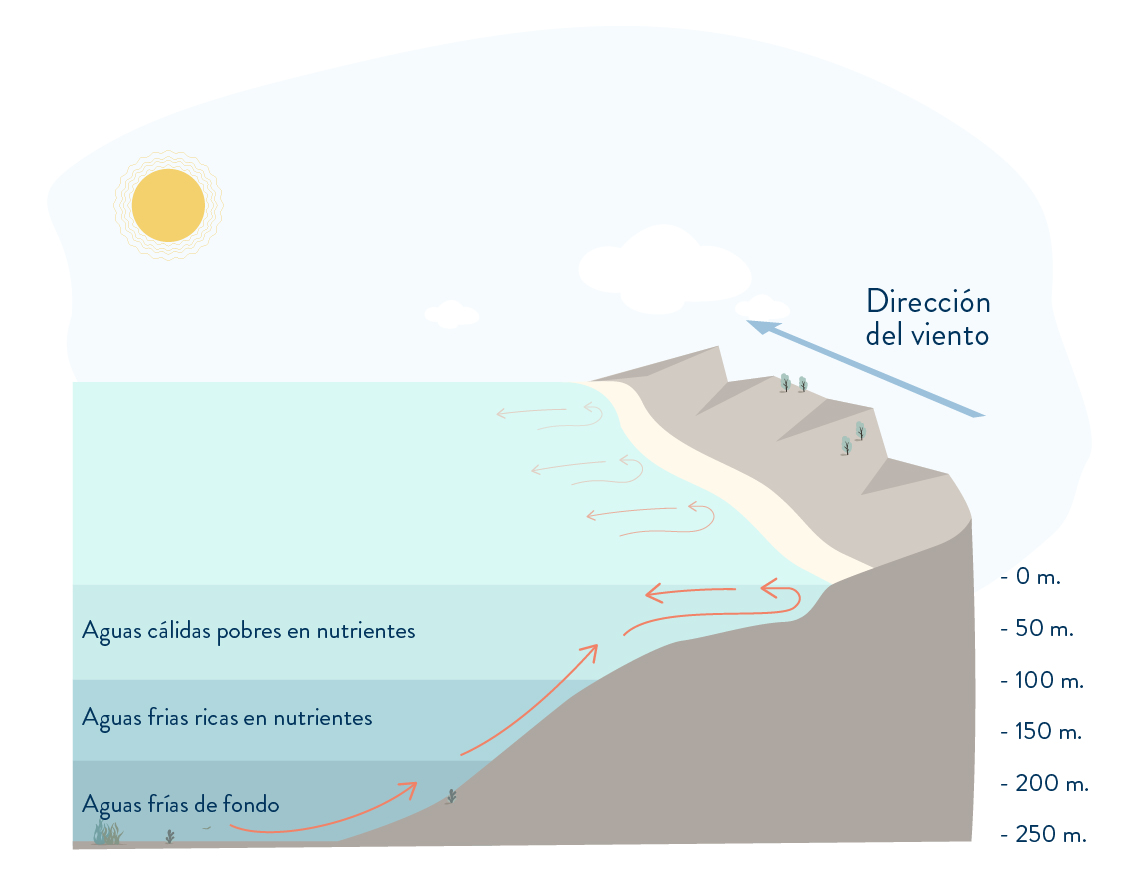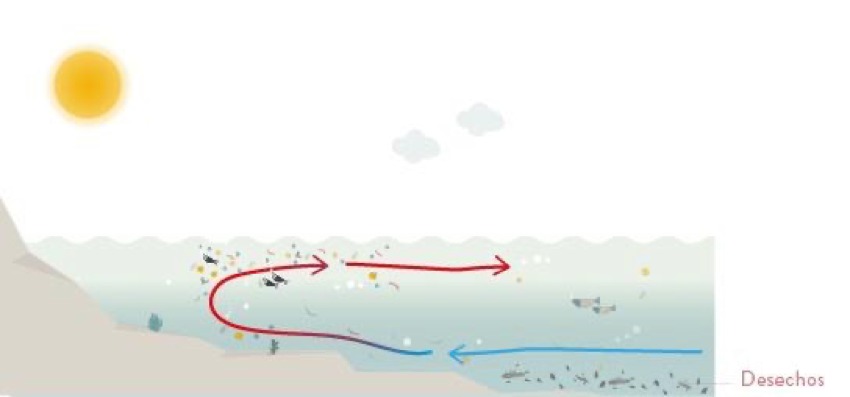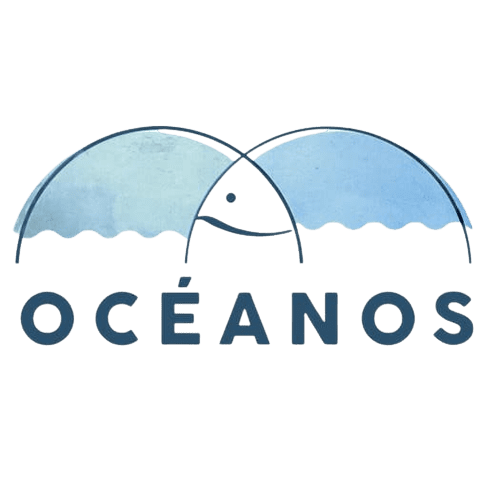Beagle group
Life in the Ocean
The distribution of species diversity and abundance of life in different parts of the oceans is conditioned by nutrient cycling and energy flow.
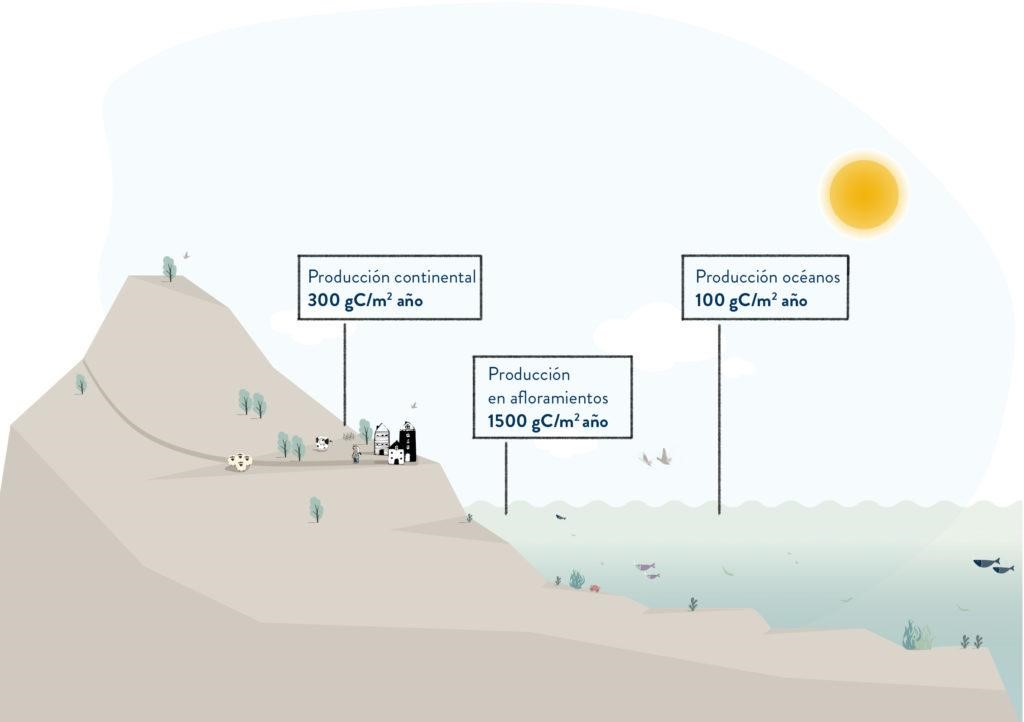
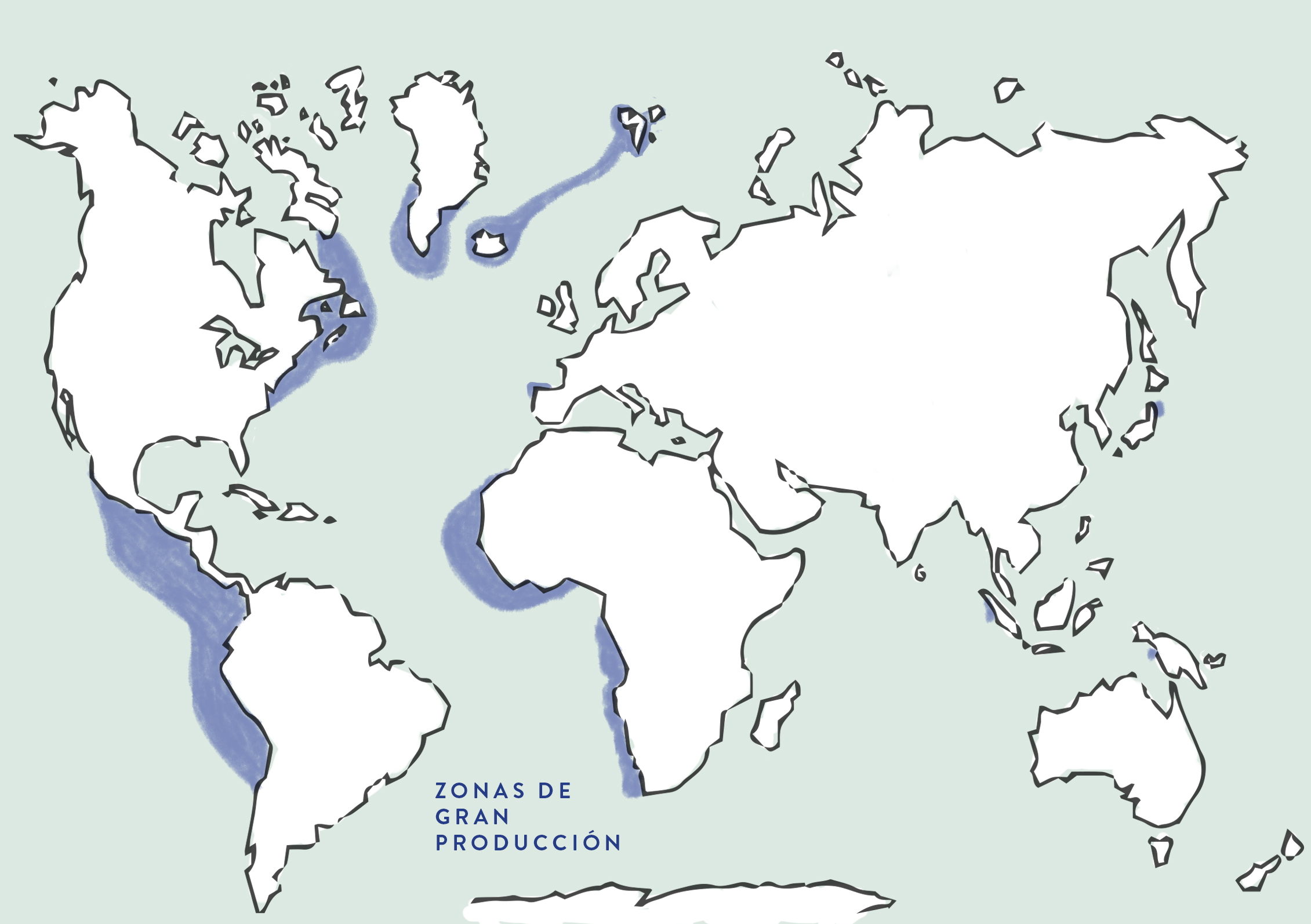
The image shows the difference in production between oceans and land. How can we explain this production difference?
You can find the answer in the LIFE IN THE OCEANS sections.
The African Atlantic coast is rich in fish and fishermen from EU countries fish in its waters. The Spanish fishing fleet has historically fished there, despite recent problems. The countries in the area set limits for EU fishermen to fish in their waters.
THE BIOSPHERE
Diferencia entre los ecosistemas terrestre y oceánico
There are three intrinsically related layers on Earth:
The lithosphere is the solid part of the Earth.
The hydrosphere is the water layer covering around three quarters of the Earth’s surface, formed by oceans and continental waters (rivers, lakes and groundwater) and the polar ice caps. Most water, approximately 97%, is in the oceans.
The atmosphere is the gaseous layer surrounding the Earth.
The biosphere is a set of living beings distributed on the lithosphere, but the environment where they live is conditioned by the interaction between the hydrosphere and the atmosphere. Rain and wind, in other words, the climate, depend on this interaction as do ocean currents, water turbulence, etc. …and this interaction characterises the ecosystems and the creatures living in them.
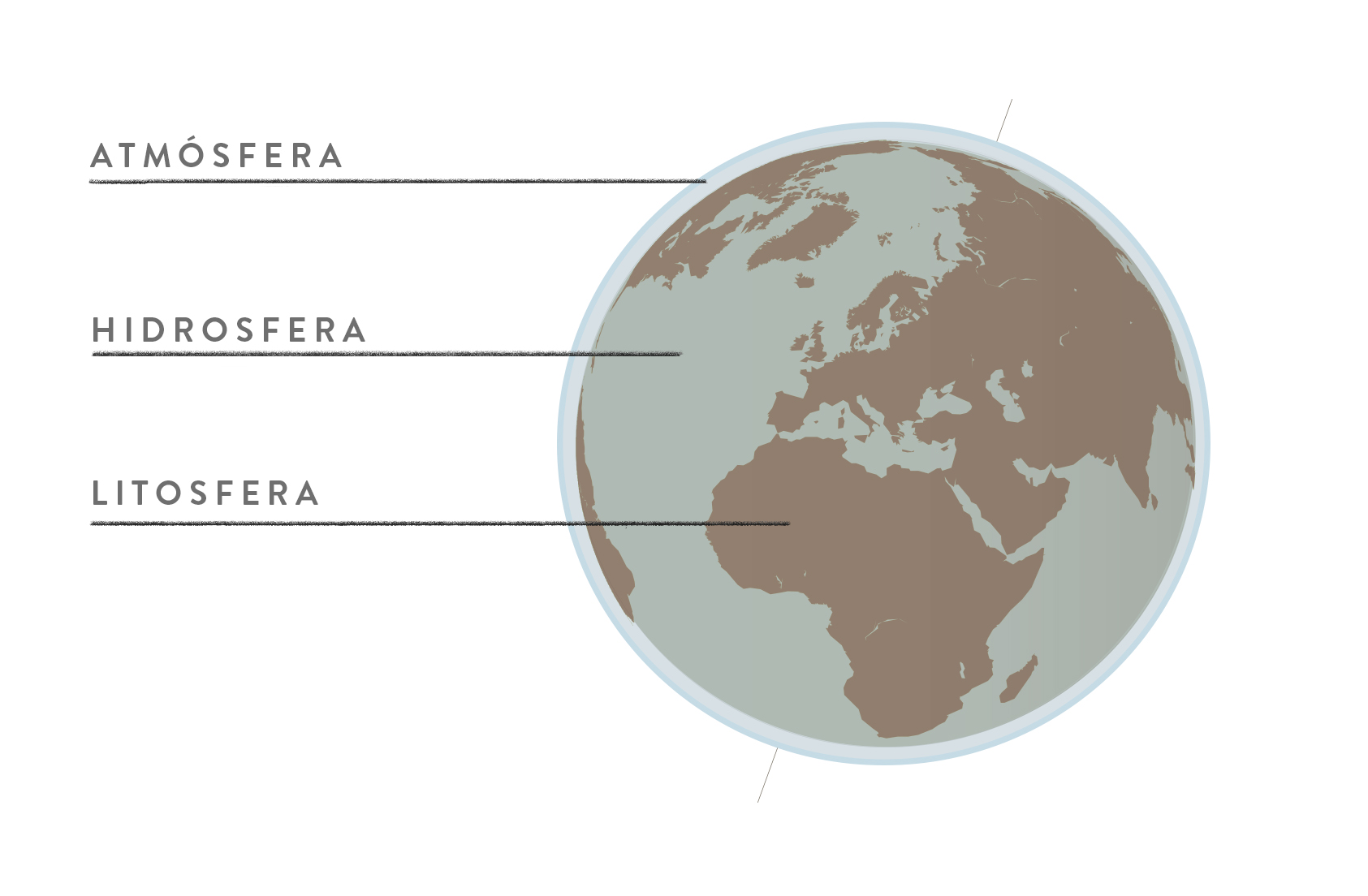
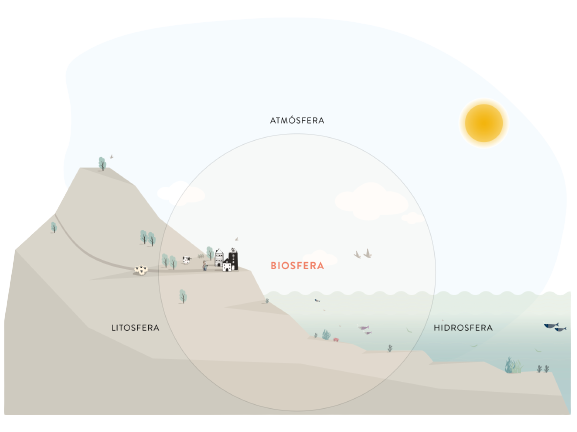
Oceans in movement
Ocean water is constantly moving, as evidenced by WAVES, OCEAN CURRENTS AND TIDES.
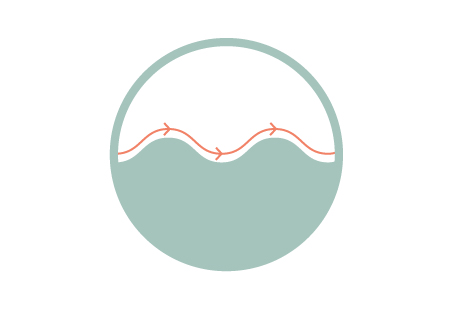
WAVES
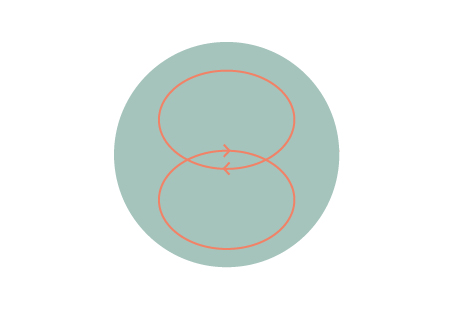
OCEAN CURRENTS
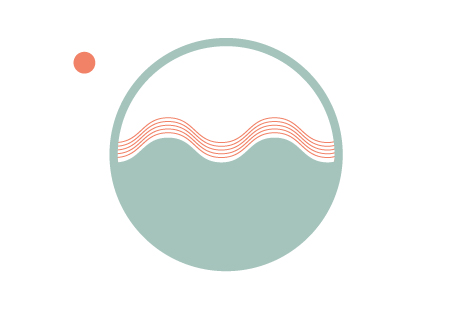
TIDES
WAVES
Winds produce turbulence on the ocean surface in the form of waves that force the surface water to move in the same direction. Consequently, waves are an effect of the interaction between the atmosphere and the hydrosphere on the water surface.
This interaction with the sea floor in turn mobilises the nutrients accumulated by sedimentation so they can be used by the organisms throughout the water column above it.
Waves transport energy from one place to another. Water rises and falls and follows a circular route that distorts when it touches the sea floor. When the waves reach the shore, their dynamics interact with the sea floor, which slows them down and makes their crests rise until they finally break on the coast.
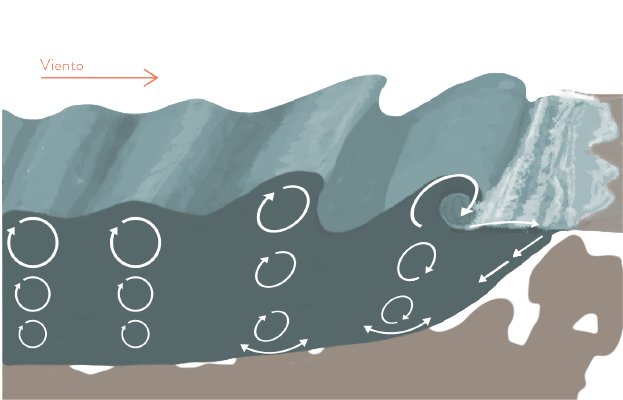
OCEAN CURRENTS
Widespread upwelling in the Northern Pacific; Warm surface flow of the North Equatorial Current in the central Pacific; Warm surface flow of the Equatorial Current in the Indonesian archipelago; Mass of cold water mixed in the slow flow throughout the Antarctic (figura)
The flow of ocean currents is complex as it involves the action of winds on the surface and differences in water temperature and salinity, all combined with the Earth’s rotation and the distribution of the continents. Water is warmed on its surface at the Equator and then moves to the Poles, where it is cooled. As colder water is more dense, it sinks and moves along the sea floor to the Equator where it is warmed and rises because it is less dense, thus completing the ocean current cycle.
As a result of this circulation of water currents, oceans transport nutrients, oxygen, cold and warmth around the Earth.
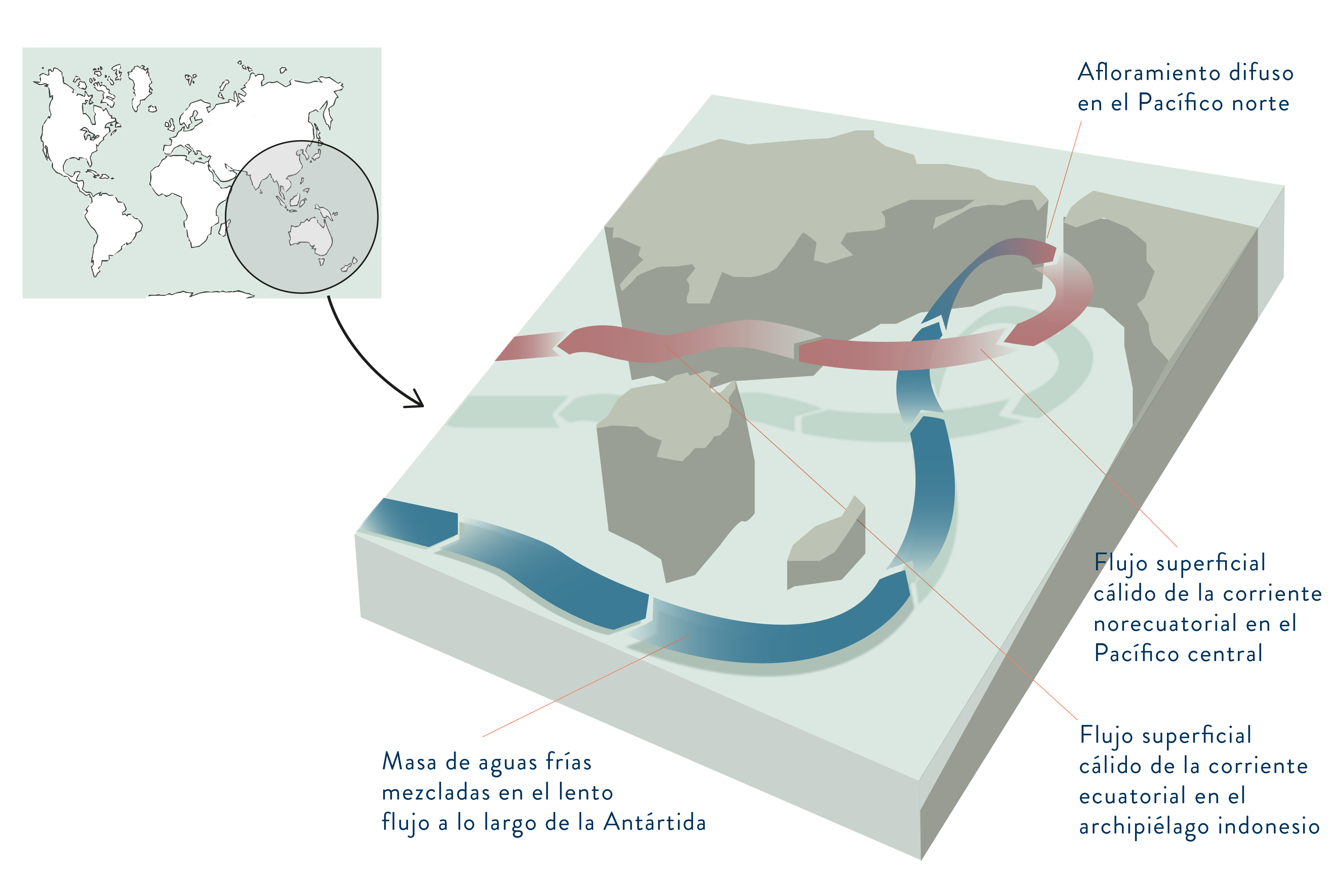
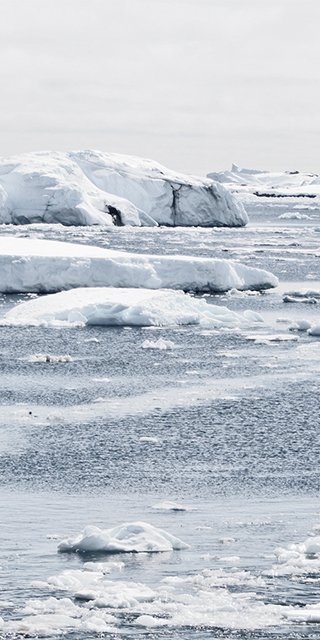
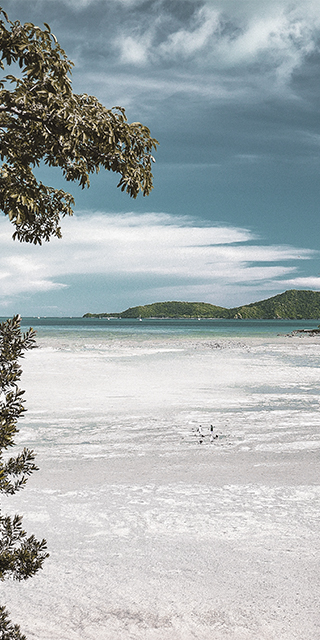
When the Sun heats, the surface layer becomes warmer. If the process is very quick, as it is in summer, there are significant differences in temperature compared with deeper waters. We can differentiate a water layer that is at an intermediate temperature between warm and cold called a thermocline. It also represents a sharp change in density (less dense warm water and more dense cold water). This is interesting because water masses slide more easily over the thermocline.
When the wind blows strongly or there is a storm, the waters are stirred up, the thermocline is broken and the waters mix again.
The thermocline is a barrier for many microscopic organisms, which cannot cross it, but what about nutrients?
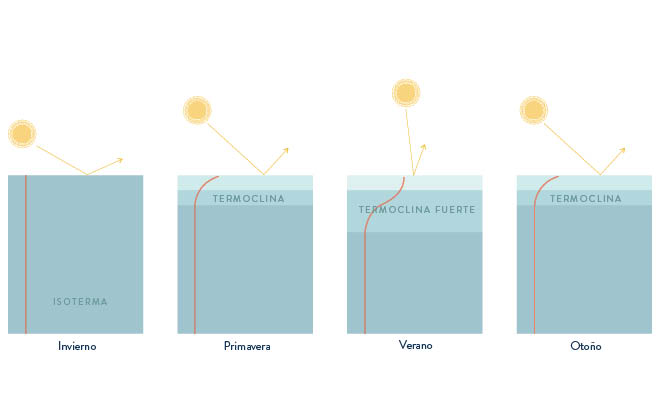
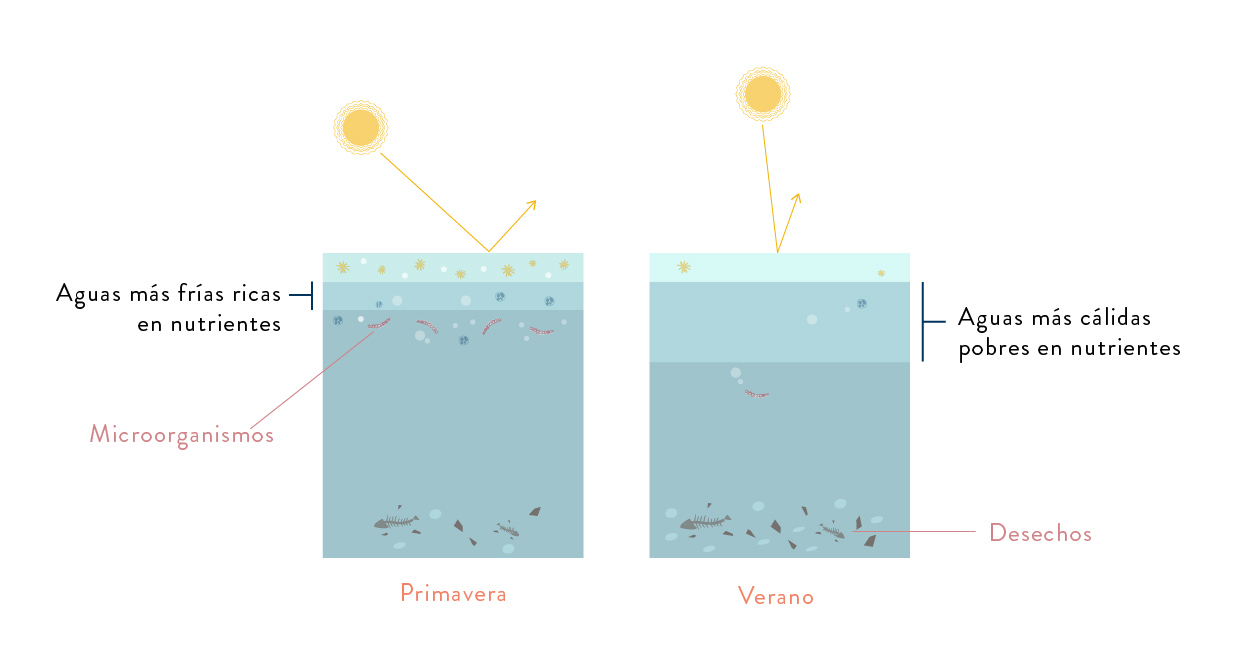
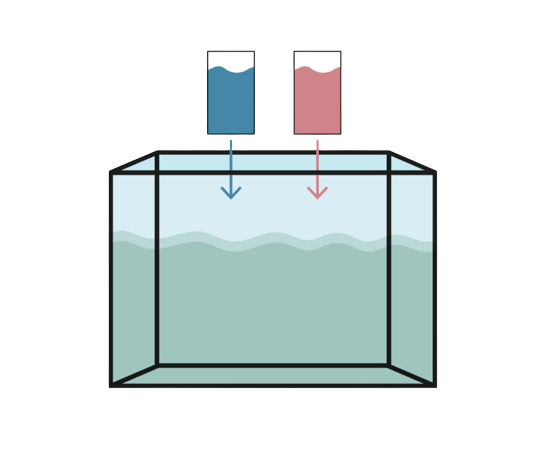
UPWELLINGS
The ocean current system includes horizontal and vertical movements and these can be ascending or descending. When a mass of deep water ascends it is called an upwelling. This causes the nutrients accumulated on the sea floor to rise to the photic layer resulting in a significant increase in the production of phytoplankton and, therefore, of the biomass of all the trophic levels in the ecosystem.
Upwellings occur when there are constant and intense winds, which blow parallel to this straight coast and cause water masses to move from the surface towards open sea and deep, colder, more dense and nutrient-rich waters to ascend.
Wind direction; Warm water that is poor in nutrients; Cold water that is rich in nutrients
